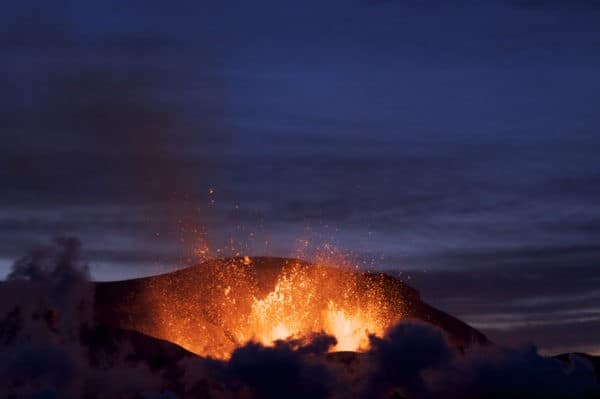

A new study has determined that volcano super eruptions -events so large they spew out hundreds of cubic kilometres of magma and ash- typically give only one year’s warning before they erupt, a prospect which would leave humanity little time to prepare for the worldwide devastation produced by such an eruption.
The 2010 eruption of the Eyjafjallajökull volcano in Iceland disrupted air traffic and coated much of Northern Europe with volcanic ash, while the eruption of Mount St. Helens in Washington State in May of 1980, which was the deadliest and most economically costly volcano blast in U.S. history, covering 11 states with ash and killing approximately 57 people.
But neither of these disasters comes close to the power and devastation of what geologists refer to as super-eruptions volcanic explosions that register highest on the Volcanic Explosivity Index and send up between 100 and 1000 cubic kilometers of ejecta into the atmosphere.
Volcano “Super Eruption”. When is the next big one due?
Scientists have long tried to pinpoint when and where the next supervolcano will erupt.
Now, researchers at Vanderbilt University and the University of Chicago have used microscopic analysis of quartz crystals to conclude that the decompression process which releases gas bubbles prior to an eruption begins less than a year before the actual event.
“Super-eruptions have been described as the ultimate geologic hazard,” say the study’s authors, whose research is published in the scientific journal Plos One. “And in many ways, understanding the potential hazards associated with super-eruptions is the ultimate geologic exercise, in which we are pressed to learn as much as possible from the geologic record of past super-eruptions.”
Researchers looked at quartz collected from the Bishop Tuff rock formation in eastern California, created by a super-eruption 760,000 years ago, and found that the telltale rims which form on quartz crystals in the lead-up to an eruption had developed in just the days and months before the explosive event. “More than 70 per cent of rim growth times are less than 1 year,” say the study’s authors.
The closest thing to a such an event in recent history was the Mount Tambora eruption in Indonesia in 1815, which ejected approximately 180 cubic kilometres of material in just a few days and precipitated what was called the “Year without a summer” in 1816 – a volcanic winter that plummeted global temperatures and caused massive famine and civil unrest for the decade to follow. The last true super-eruption occurred 26,000 years ago in the Taupo Volcanic Zone in New Zealand, preceded by the Toba super-eruption in Sumatra some 75,000 years ago.
Historically, North America has seen super-eruptions at the Yellowstone Caldera in the state of Wyoming and in Canada at what’s known as the Blake River Megacaldera on the border between Ontario and Quebec.
Why is a volcano super eruption so devastating?
Why is a super-eruption so devastating? Volcanic ash is the main problem, as billions of tonnes of particulate travel through the air, making breathing difficult, blocking out the Sun and covering everything in sight for thousands of kilometres around. The ash from a super-eruption would contaminate lakes and rivers and make much of the region close to the volcanic site uninhabitable, while sulfur compounds in the ash which reflect sunlight would bring about a volcanic winter and threaten agricultural production worldwide.
The chances of a super-eruption occurring in the near future are slim, however, as geologists have not seen the telltale signs of significant magma buildup underneath any of the known supervolcano sites around the world. “As far as we can determine, none of these places currently house the type of melt-rich, giant magma body needed to produce a super-eruption,” says Guilherme Gualda, professor of earth and environment sciences at Vanderbilt University and co-author of the new study. “However, they are places where super-eruptions have happened in the past so are more likely to happen in the future.”
Leave a Reply
You must be logged in to post a comment.




 Share
Share Tweet
Tweet Share
Share




Comment